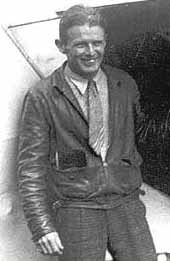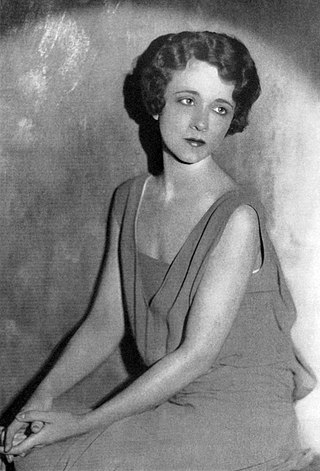
Test Pilot is a 1938 American drama film directed by Victor Fleming, starring Clark Gable, Myrna Loy and Spencer Tracy, and featuring Lionel Barrymore. The Oscar-nominated film tells the story of a daredevil test pilot (Gable), his wife (Loy), and his best friend (Tracy).

Charles Augustus Lindbergh was an American aviator and military officer. On May 20–21, 1927, he made the first nonstop flight from New York City to Paris, a distance of 3,600 miles (5,800 km), flying alone for 33.5 hours. His aircraft, the Spirit of St. Louis, was designed and built by the Ryan Airline Company specifically to compete for the Orteig Prize for the first flight between the two cities. Although not the first transatlantic flight, it was the first solo transatlantic flight and the longest at the time by nearly 2,000 miles (3,200 km). It became known as one of the most consequential flights in history and ushered in a new era of air transportation between parts of the globe.

The Spirit of St. Louis is the custom-built, single-engine, single-seat, high-wing monoplane that was flown by Charles Lindbergh on May 20–21, 1927, on the first solo nonstop transatlantic flight from Long Island, New York, to Paris, France, for which Lindbergh won the $25,000 Orteig Prize.
A transatlantic flight is the flight of an aircraft across the Atlantic Ocean from Europe, Africa, South Asia, or the Middle East to North America, Latin America, or vice versa. Such flights have been made by fixed-wing aircraft, airships, balloons and other aircraft.
Tailspin Tommy was an aviation-adventure comic strip about a youthful pilot, "Tailspin" Tommy Tomkins. Originally illustrated by Hal Forrest and initially distributed by John Neville Wheeler's Bell Syndicate and then by United Feature Syndicate, the strip had a 14-year run from May 21, 1928 to March 15, 1942.

Douglas Corrigan was an American aviator, nicknamed "Wrong Way" in 1938. After a transcontinental flight in July from Long Beach, California, to New York City, he then flew from Floyd Bennett Field in Brooklyn to Ireland, although his flight plan was filed to return to Long Beach.

Bertrand Blanchard Acosta was a record-setting aviator and test pilot. He and Clarence D. Chamberlin set an endurance record of 51 hours, 11 minutes, and 25 seconds in the air. He later flew in the Spanish Civil War in the Yankee Squadron. He was known as the "bad boy of the air". He received numerous fines and suspensions for flying stunts such as flying under bridges or flying too close to buildings.

The Spirit of St. Louis is a 1957 aviation biography film in CinemaScope and Warnercolor from Warner Bros., directed by Billy Wilder, produced by Leland Hayward, and starring James Stewart as Charles Lindbergh. The screenplay was adapted by Charles Lederer, Wendell Mayes, and Billy Wilder from Lindbergh's 1953 autobiographical account of his historic flight, which won the Pulitzer Prize in 1954.

Scholes International Airport at Galveston is three miles southwest of Galveston, in Galveston County, Texas, United States. The National Plan of Integrated Airport Systems for 2011–2015 categorized it as a reliever airport.

Edward Quillan was an American film actor and singer whose career began as a child on the vaudeville stages and silent film and continued through the age of television in the 1980s.

Reaching for the Skies was an aviation documentary TV series made by BBC Pebble Mill in association with CBS Fox. The first episode was transmitted in the United Kingdom on 12 September 1988 and in the US in 1989.

Bergetta "Dorothy" Peterson was an American actress. She began her acting career on Broadway before appearing in more than eighty Hollywood films.

Flying Blind is a 1941 American action comedy film directed by Frank McDonald and distributed by Paramount Pictures. The film was the second movie from Pine-Thomas Productions. That company's first three films formed an unofficial "aviation trilogy"; all starred Richard Arlen.

The Wright-Bellanca WB-2, was a high wing monoplane aircraft designed by Giuseppe Mario Bellanca, initially for Wright Aeronautical then later Columbia Aircraft Corp.

China Clipper is a 1936 American drama film directed by Ray Enright, written by Frank Wead and starring Pat O'Brien, Ross Alexander, Beverly Roberts, Humphrey Bogart and, in his final motion-picture appearance, veteran actor Henry B. Walthall. Walthall was gravely ill during production and his illness was incorporated into his character's role. He died during production.
Rudy Arnold (1902–1966) was an American photographer who specialized in aviation photography.

Emily Joyce Howell Warner was an American airline pilot and the first woman captain of a scheduled U.S. airline.

Thor Solberg was a Norwegian-born aviation pioneer who made the first successful flight from the United States of America to Norway in 1935. He made the journey, which started in New York City, in an open-cockpit single-engine aircraft with no landing instruments. For this reason, he was restricted to an altitude of 1,000 to 10,000 feet. Solberg also founded the Solberg-Hunterdon Airport in New Jersey.

20,000 Men a Year is a 1939 American action film directed by Alfred E. Green and written by Lou Breslow and Owen Francis. The film stars Randolph Scott, Preston Foster, Margaret Lindsay, Mary Healy, Robert Shaw, George Ernest, Jane Darwell, Kane Richmond and Maxie Rosenbloom. It was the fourth and last film produced by Cosmopolitan Pictures in its final year of operation.

John Trent was an aviator-turned-actor-turned-aviator, best known as an actor for the "Tailspin Tommy" adventure film series in the 1930s. From 1931 to 1941, under the stage name John Trent, Browne appeared in 16 Hollywood films. While flying was a natural for him, acting was not, and he eventually turned his back on his Hollywood career, resuming his career in aviation, as a test pilot.


















